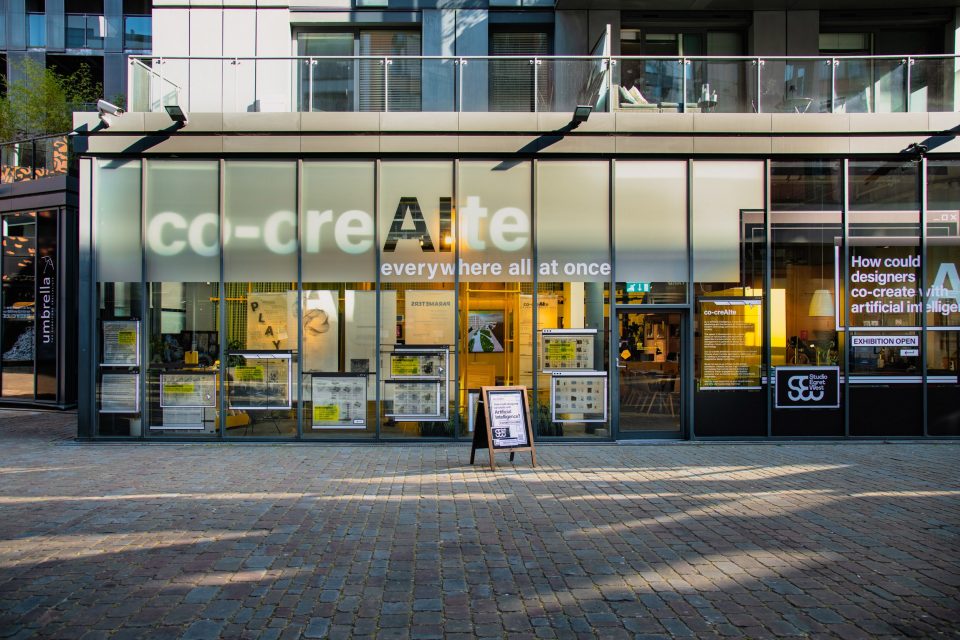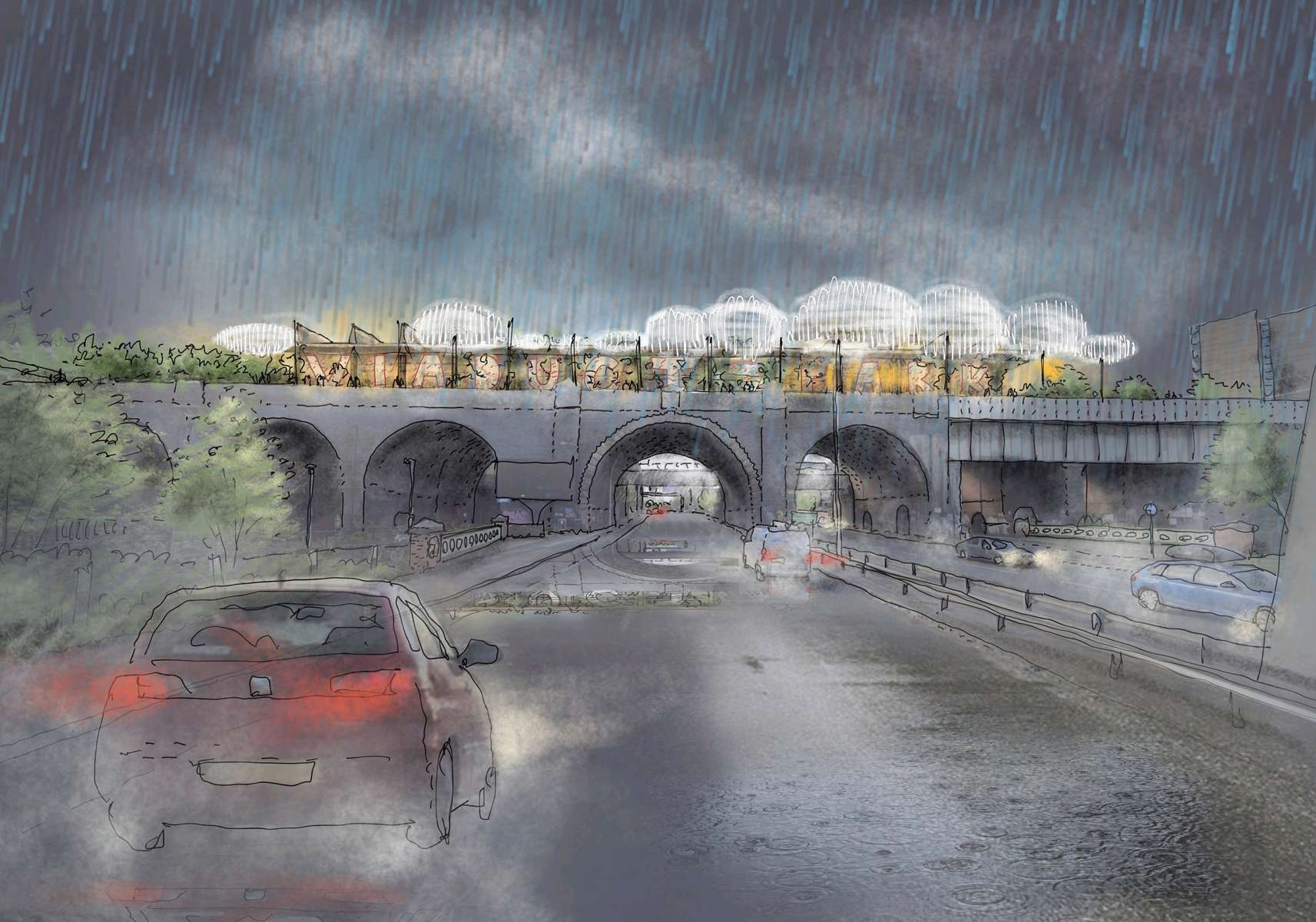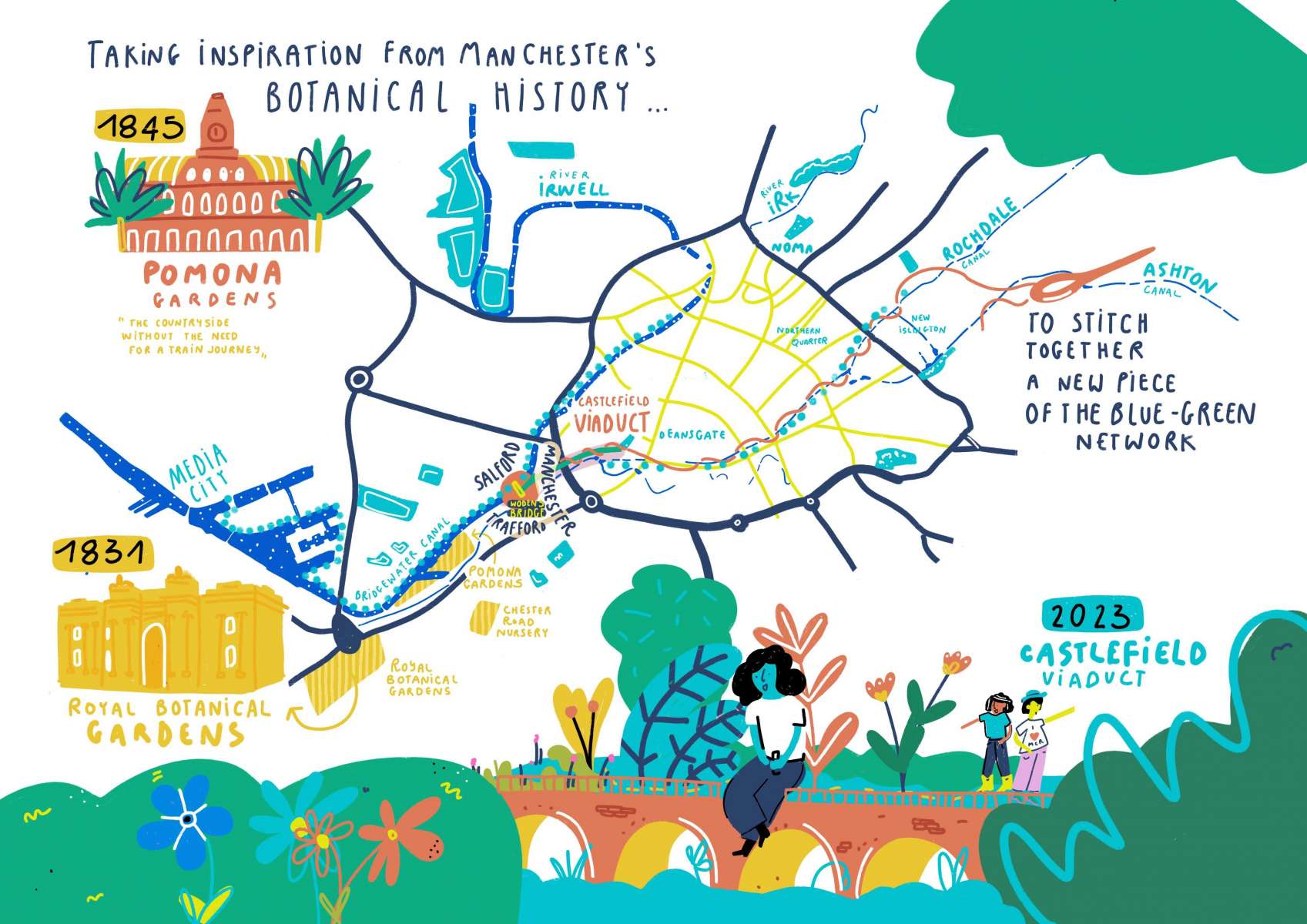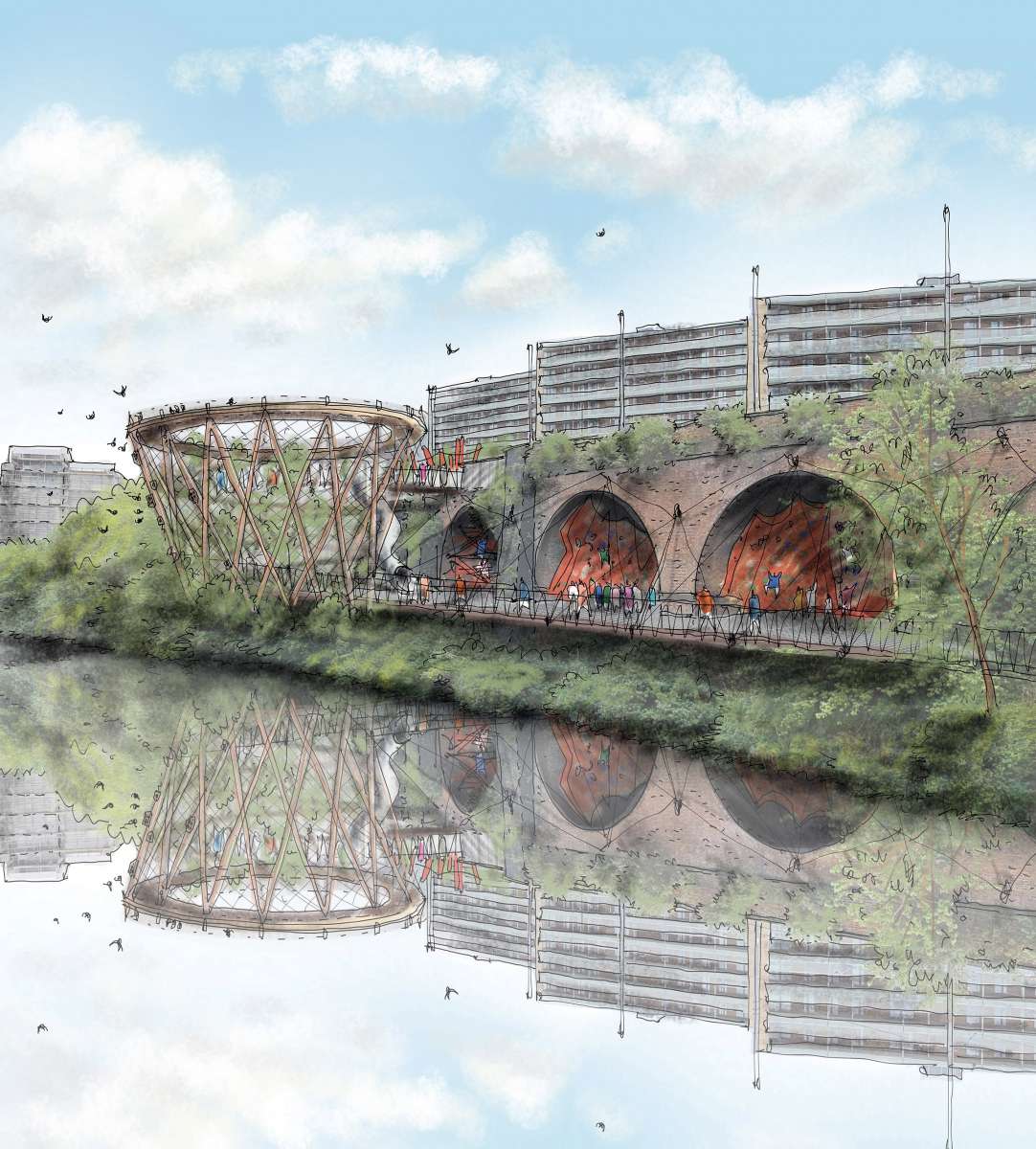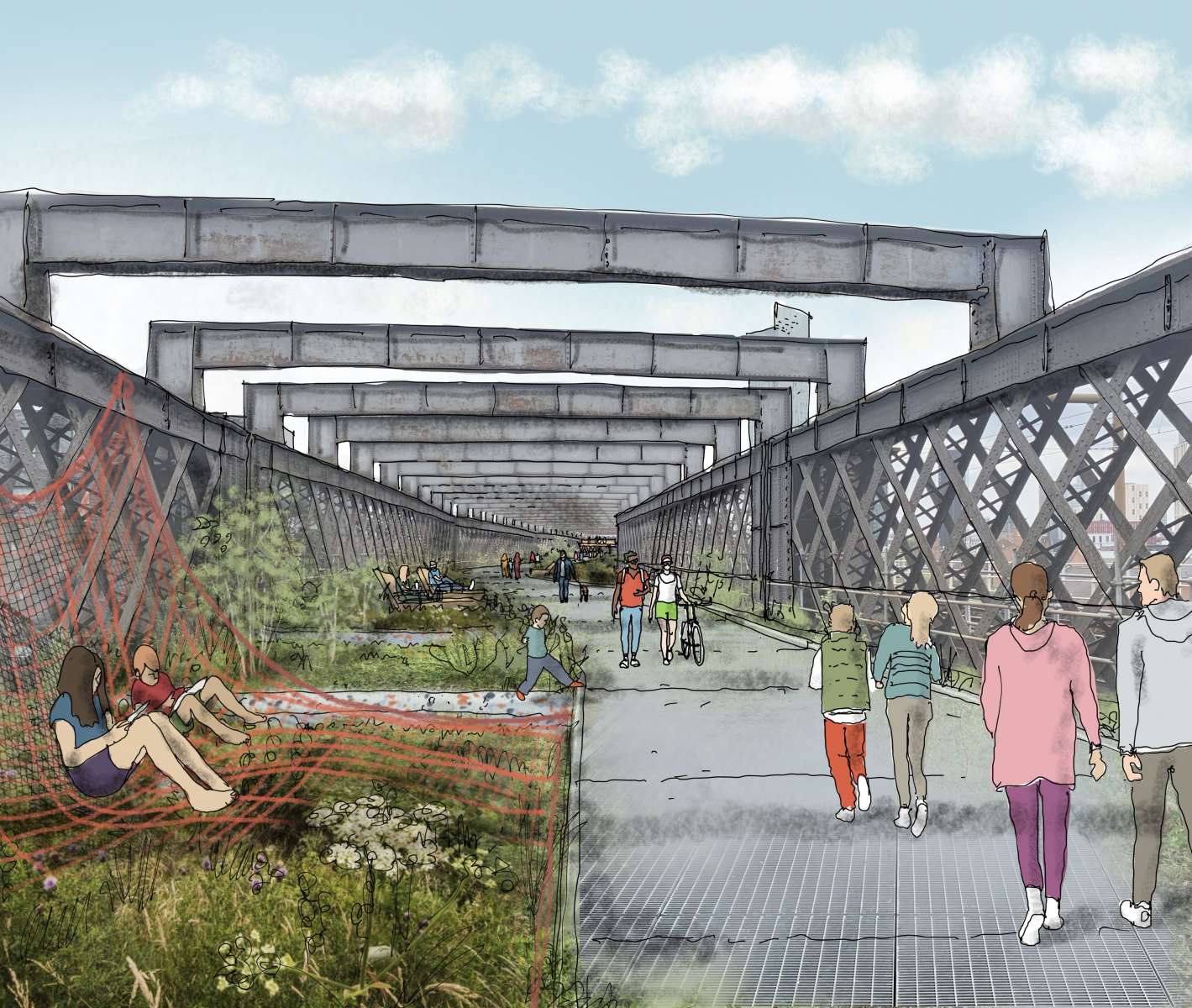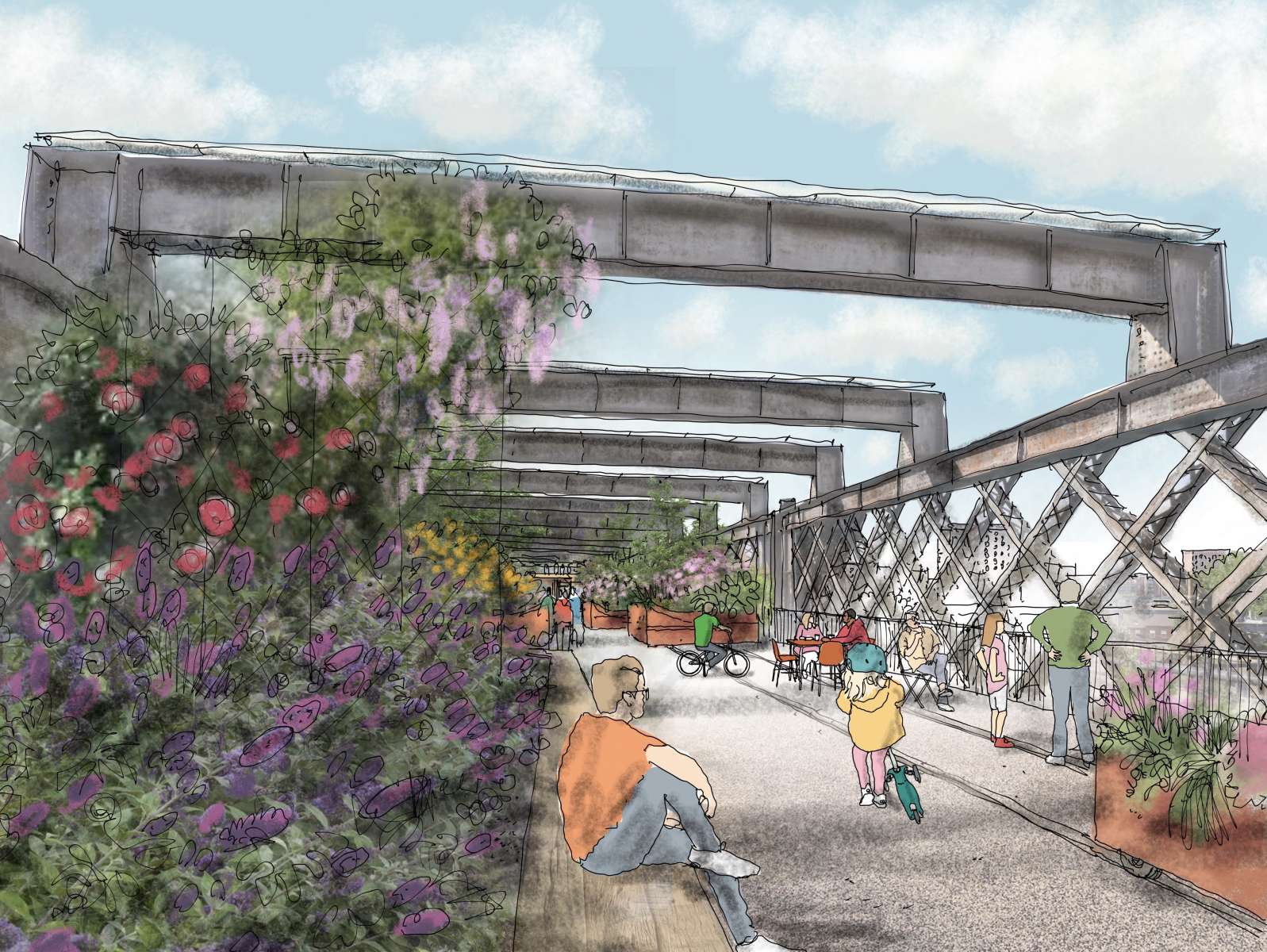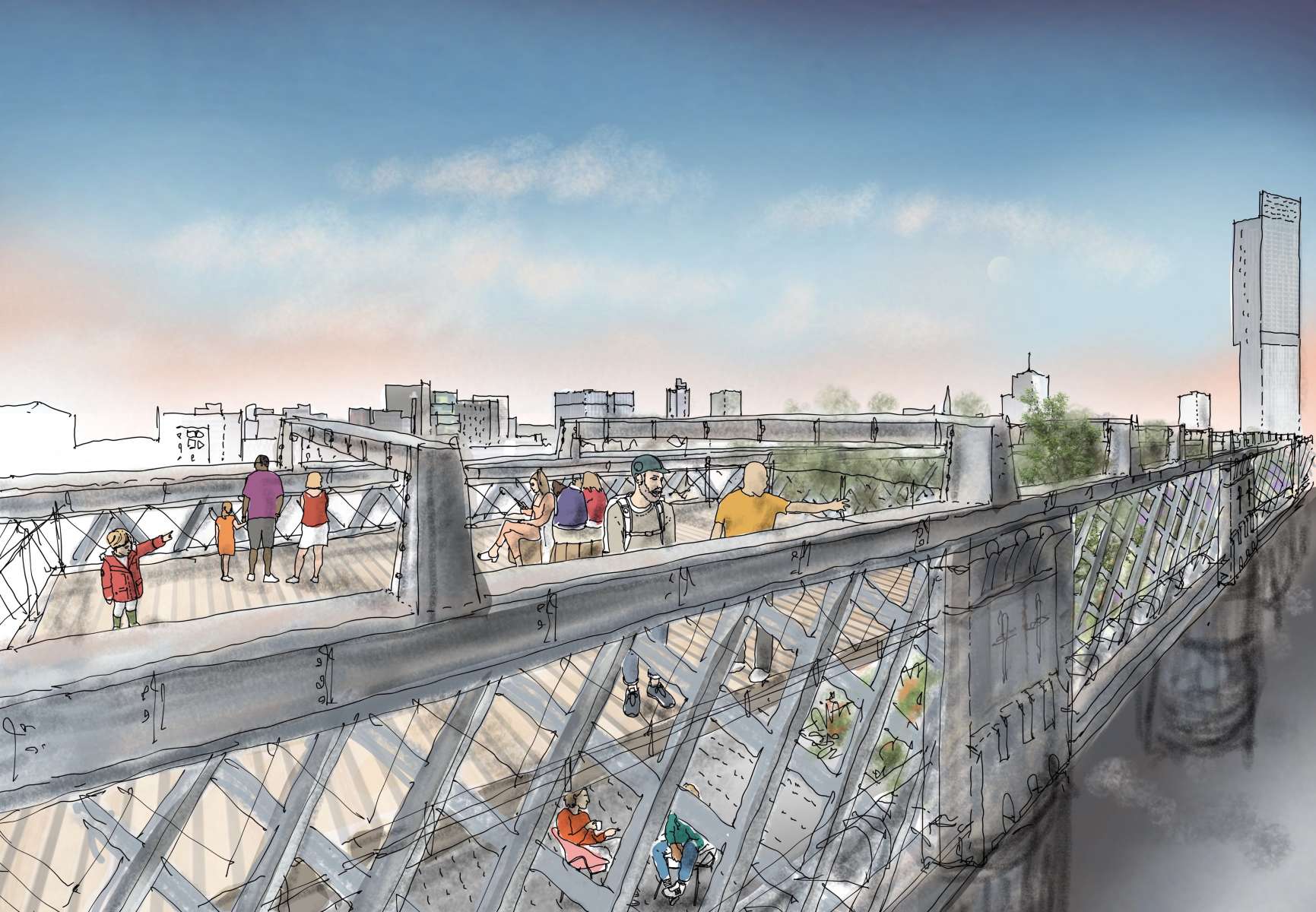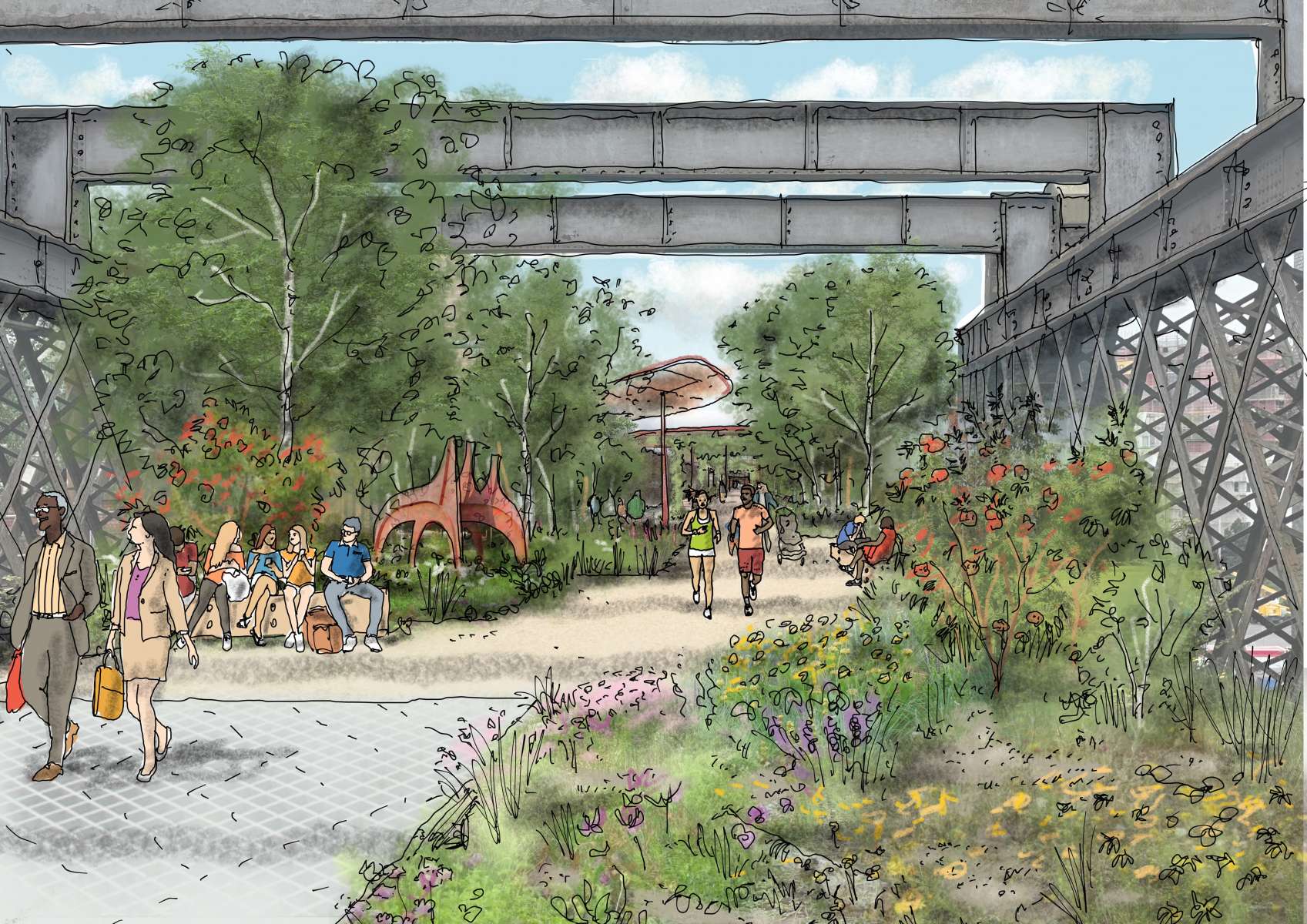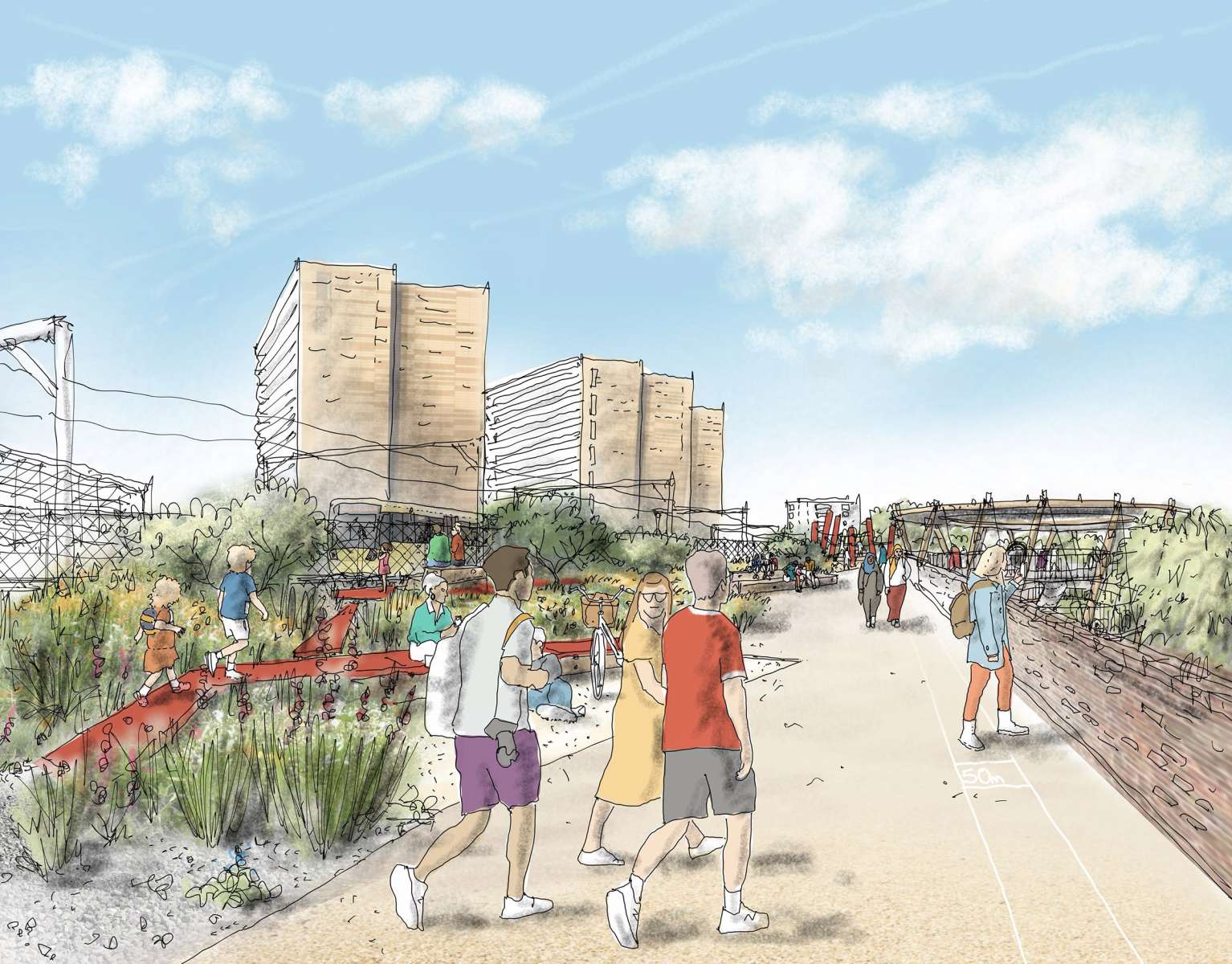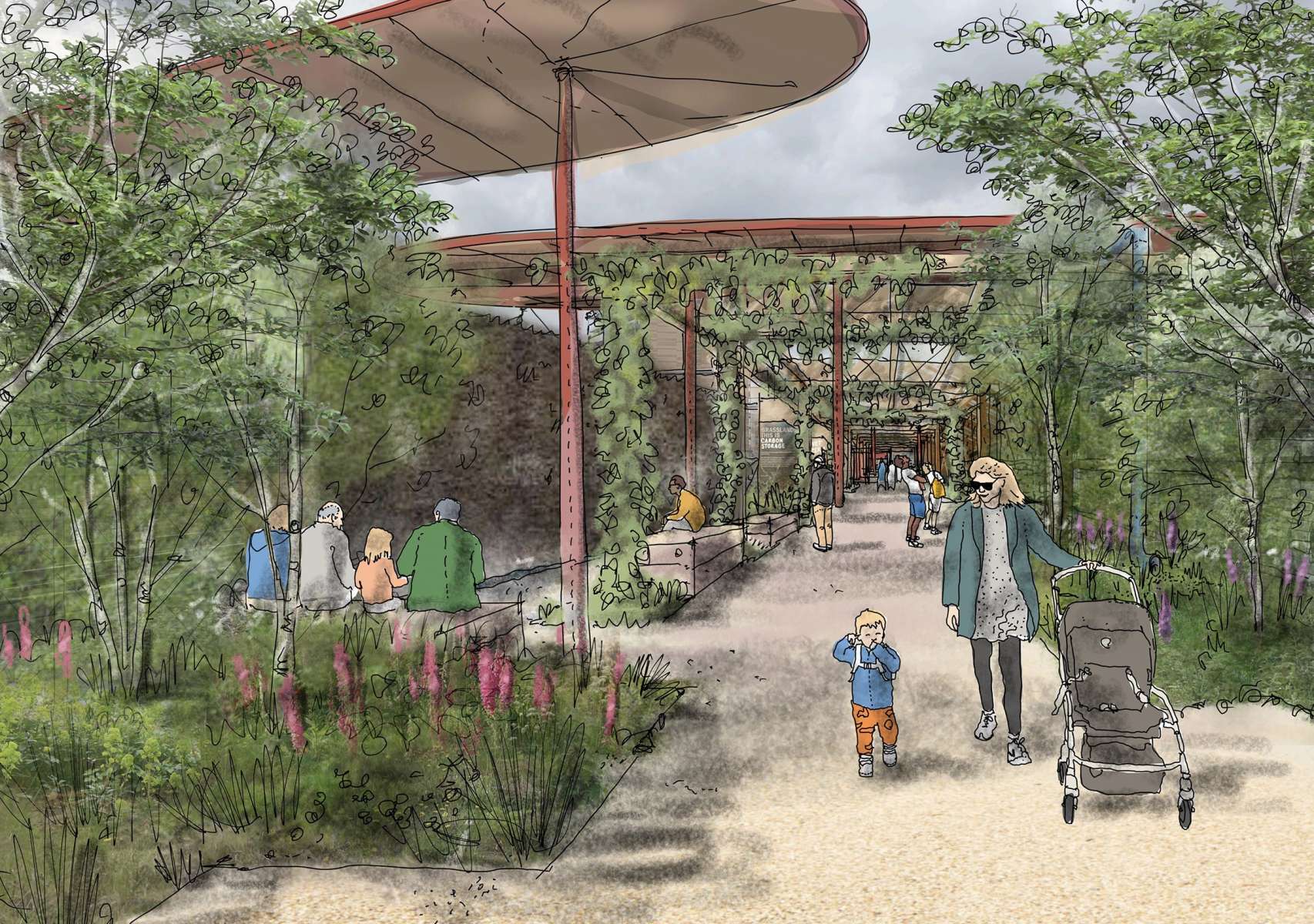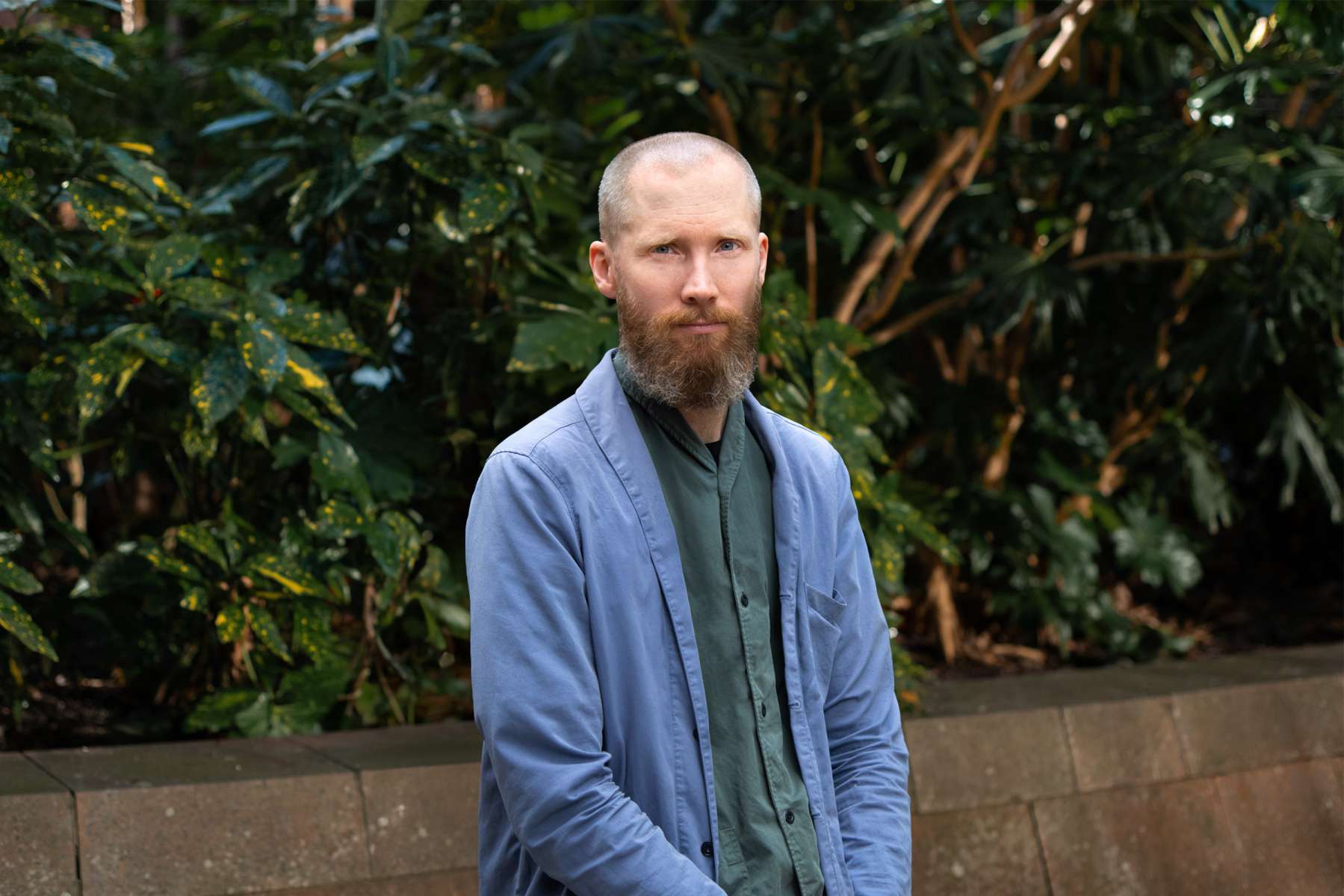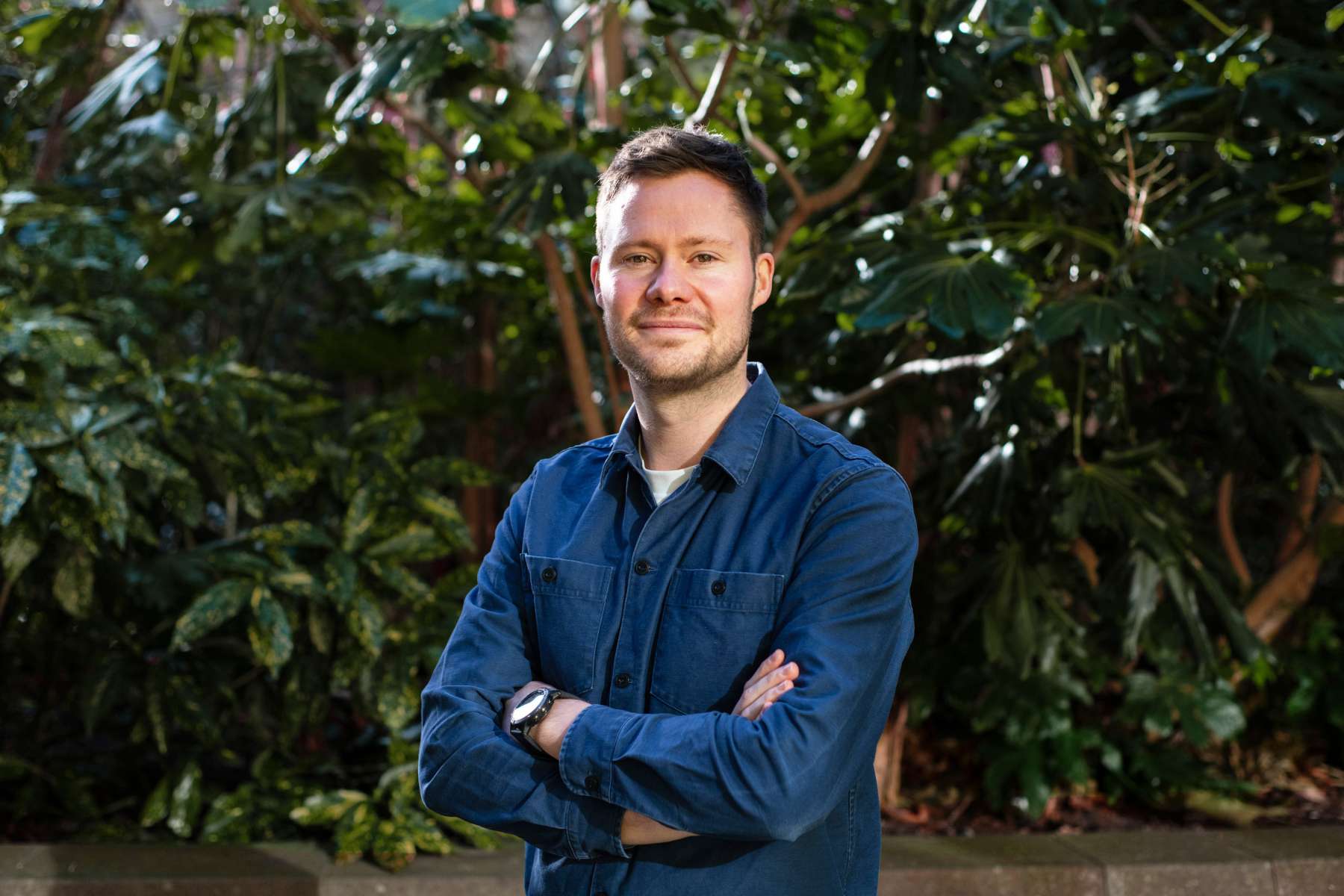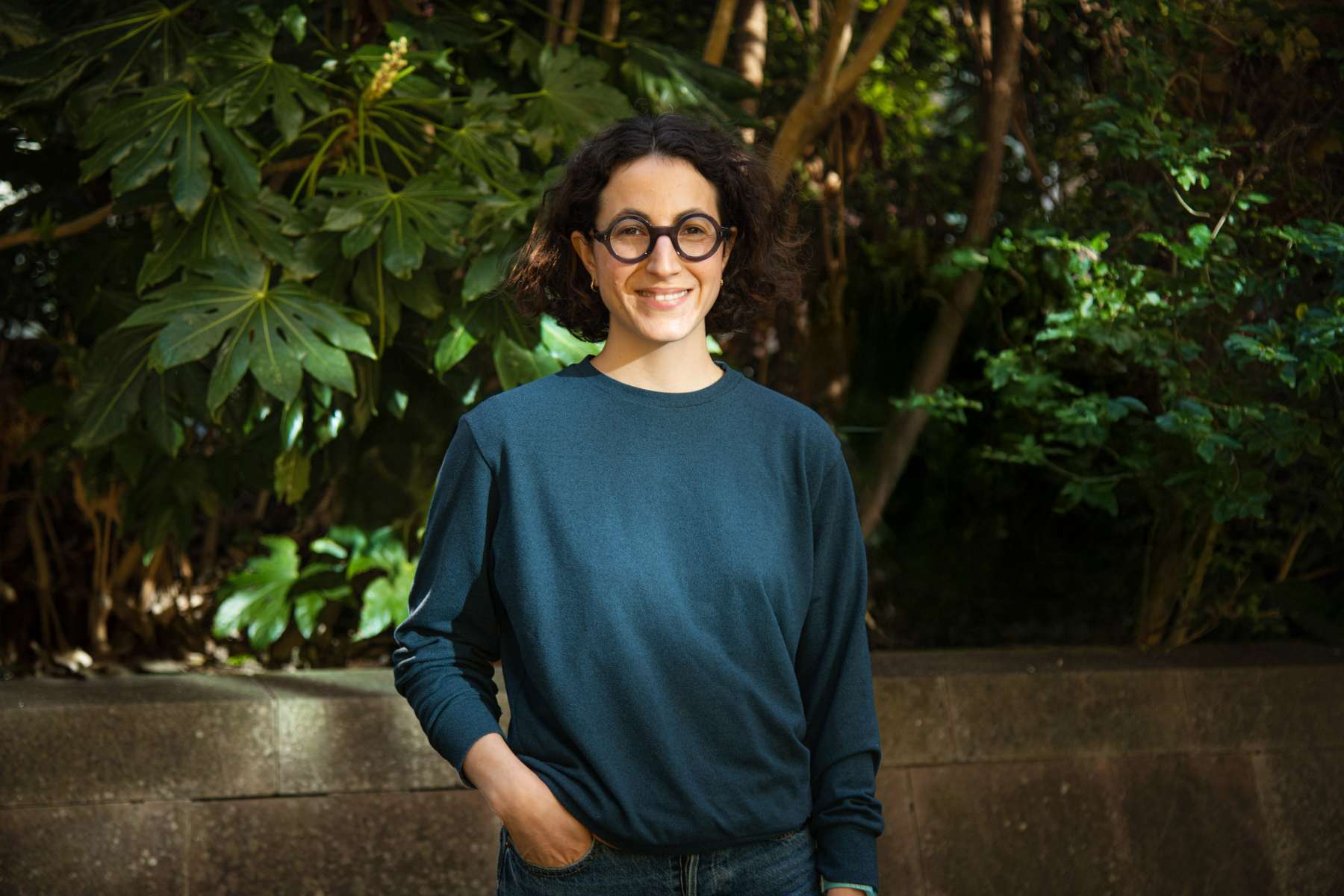Inspired by the multi-layered historical narrative, ‘Castlefield in the Sky’ viaduct, brings to life an iconic part of Manchester, via a 1km stretch of green corridor – now a vibrant new home for both people and wildlife to thrive in.
Strategy
The 1893 Castlefield Viaduct is a 330m long, beautiful Grade II listed historic structure at the heart of Manchester. The National Trust, working with the community and Historic Railway Estate, developed a temporary sky park on the deck of the viaduct which was opened to the public in July 2022. A year on, they invited a short-list of Landscape Architects to design a new uninterrupted, elevated green corridor spanning 1 km along from Deansgate tram stop to Pomona Island. The corridor was to act as an active travel route, a place for people to stop and dwell as an iconic destination and a community space.
The vision for our competition entry was based on the observation that people and nature have thrived here before. The viaduct has layers of rich historical narrative with an abundance of built industrial heritage on show throughout the conservation area.
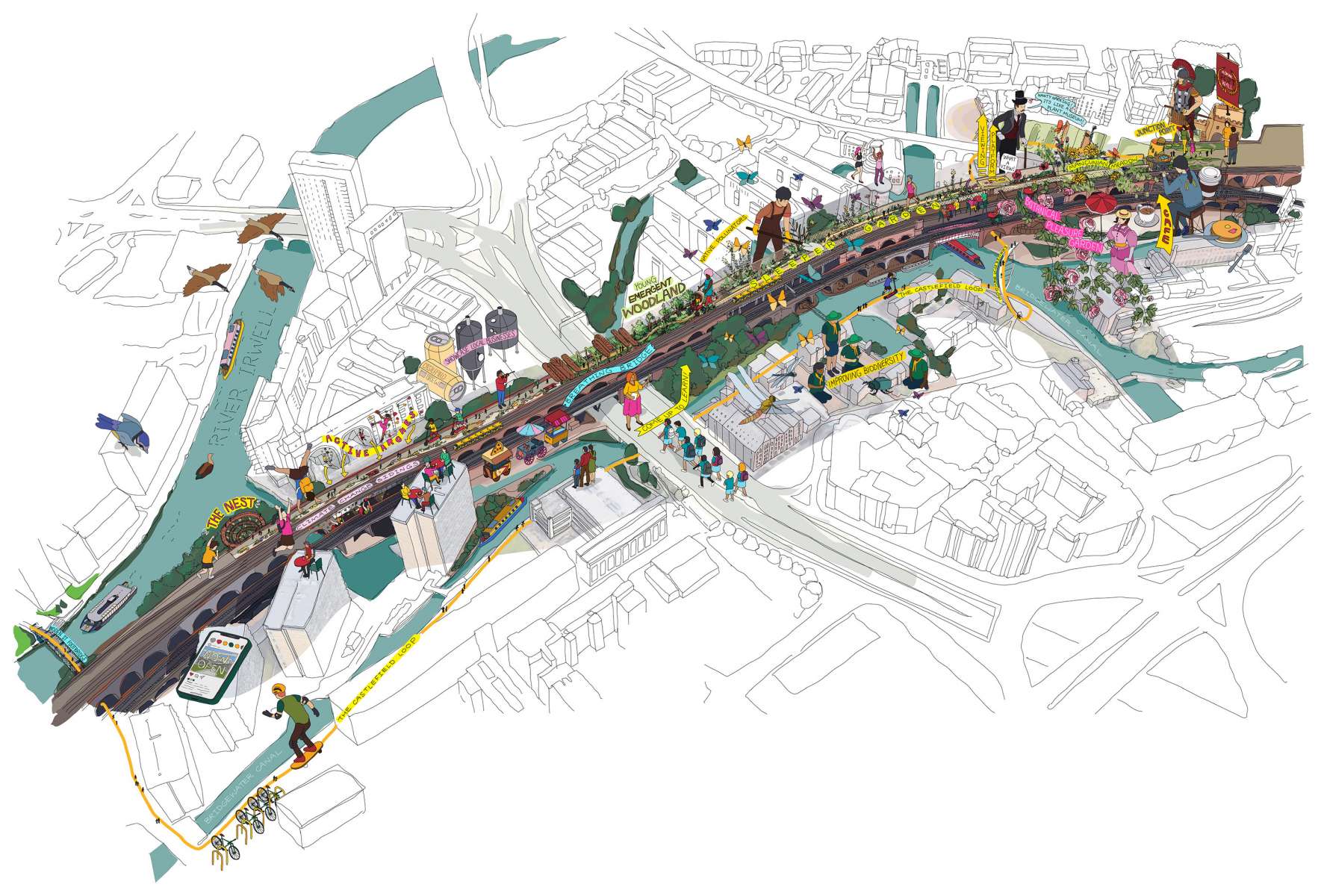
Key Project Contacts
